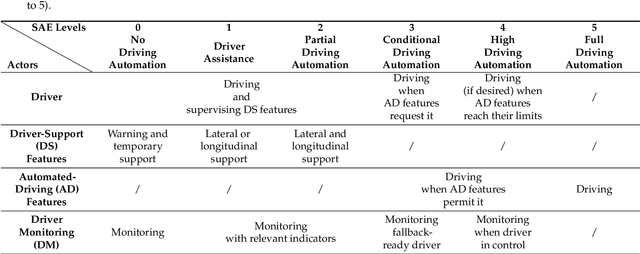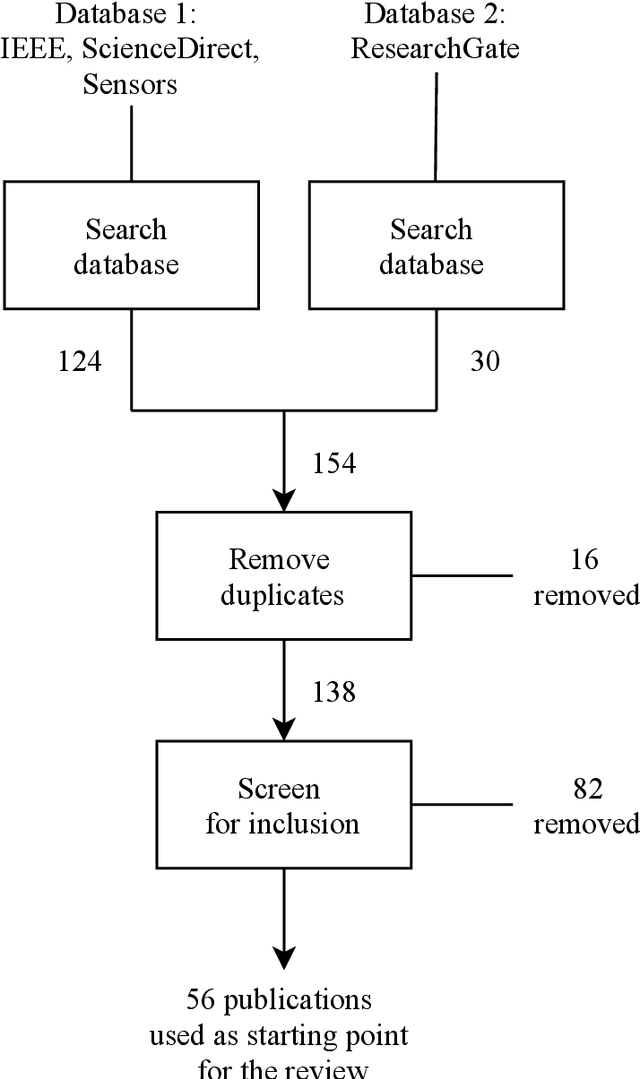Jacques G. Verly
Survey and synthesis of state of the art in driver monitoring
Oct 01, 2021



Abstract:Road-vehicle accidents are mostly due to human errors, and many such accidents could be avoided by continuously monitoring the driver. Driver monitoring (DM) is a topic of growing interest in the automotive industry, and it will remain relevant for all vehicles that are not fully autonomous, and thus for decades for the average vehicle owner. The present paper focuses on the first step of DM, which consists in characterizing the state of the driver. Since DM will be increasingly linked to driving automation (DA), this paper presents a clear view of the role of DM at each of the six SAE levels of DA. This paper surveys the state of the art of DM, and then synthesizes it, providing a unique, structured, polychotomous view of the many characterization techniques of DM. Informed by the survey, the paper characterizes the driver state along the five main dimensions--called here "(sub)states"--of drowsiness, mental workload, distraction, emotions, and under the influence. The polychotomous view of DM is presented through a pair of interlocked tables that relate these states to their indicators (e.g., the eye-blink rate) and the sensors that can access each of these indicators (e.g., a camera). The tables factor in not only the effects linked directly to the driver, but also those linked to the (driven) vehicle and the (driving) environment. They show, at a glance, to concerned researchers, equipment providers, and vehicle manufacturers (1) most of the options they have to implement various forms of advanced DM systems, and (2) fruitful areas for further research and innovation.
 Add to Chrome
Add to Chrome Add to Firefox
Add to Firefox Add to Edge
Add to Edge